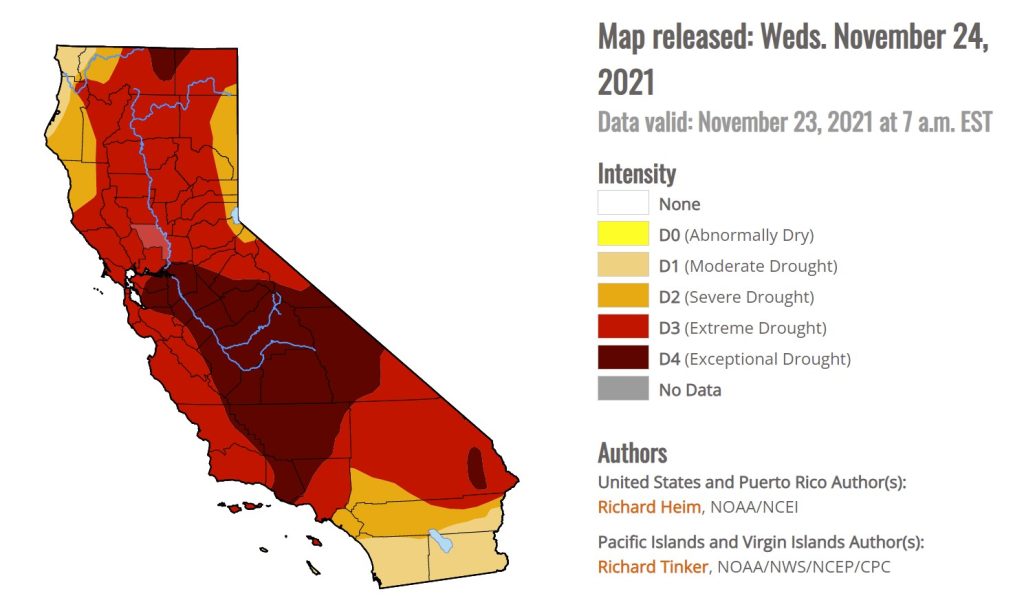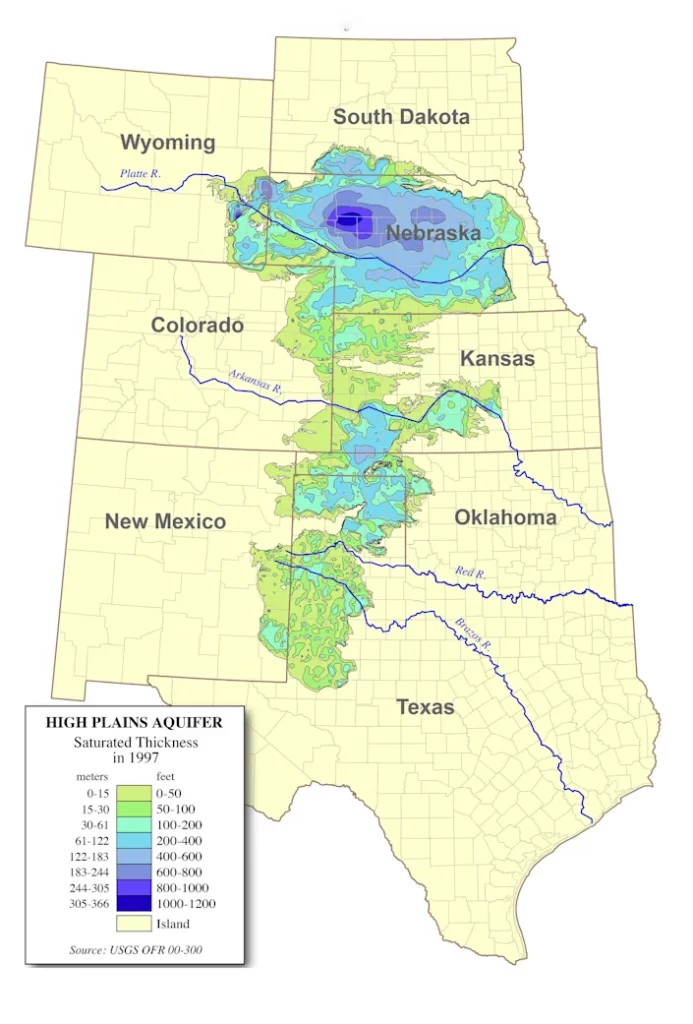
The San Francisco Public Utilities Commission members along with Mayor London Breed on Tuesday declared a water shortage emergency.
In a vote on Tuesday, the San Francisco Public Utilities Commission (SFPUC) unanimously approved the emergency measure, which applies to all 2.7 million customers in Alameda, Santa Clara, San Mateo, and San Francisco counties, according to the mayor’s office.
To accomplish their goal, the group plans to ask city residents to cut water usage by 5 percent in addition to asking agencies in other California counties that purchase water from San Francisco to cut their use by 14 percent, according to The San Francisco Chronicle.
To ensure that the city is able to finance its water systems, a 5 percent surcharge, the amount that they are asking residents to cut, will also be imposed on water usage. The charge is expected to increase people’s bills by $6 per month at most, the statement from the mayor added.
Breed in a news release urged San Franciscans to reduce water usage by taking voluntary steps “such as fixing leaky toilets, installing low-flow fixtures, reducing outdoor irrigation, and receiving water usage audits from SFPUC professionals.”
As the drought persists in California, San Francisco’s reservoir supply is at nearly 73 percent capacity. At this time of year, 80 percent capacity would be considered normal. Roughly one-third of that supply, however, is not able to be touched because of state policies regarding the drought, the Chronicle reported.
“With California still experiencing devastating drought and the uncertainty around this rainy season, we need to make tough decisions that will ensure that our water source continues to be reliable and dependable for the future,” Breed said in the statement. “Year after year, San Franciscans step up to conserve our most precious resource, resulting in one of the lowest water usage rates in California, and during this critical time, I know that our City will once again meet the call to reduce water use.”
In California, people use an average of 90 gallons per day, notably more than people in San Francisco’s average daily water use of 42 gallons per day, the announcement added.
You should really watch the documentary film: Megadrought – Vanishing Water and prepare accordingly!
California has had a rough year, suffering through high temperatures and low precipitation. Both are factors that contributed to a devastating wildfire season. The state is experiencing its worst drought since the late 1800s, as measured by both lack of precipitation and high temperatures, the governor’s office said.
The SFPUC declaration allows the agency to access water reserves and resources during an emergency. It also includes a temporary drought surcharge for customers of up to 5% on their bills which will go into effect April 1, 2022. The average residential customer surcharge is estimated at about $6 per month if they make no changes in water use.
“We are in a drought with far-reaching consequences, and it has become clear we all need to do even more to address it,” SFPUC General Manager Dennis Herrera said. “San Franciscans have been doing their part and have some of the lowest water usage in the state. This emergency water shortage declaration will help all of our customers pull together and move in the same direction.”
The mayor noted the average San Franciscan “uses 42 gallons of water per day at home … less than half of the statewide average of about 90 gallons per person per day.”
Water year 2021 – which ran from October 1, 2020, to September 30, 2021 – was California’s second-driest on record, based on statewide precipitation, with the driest being 1924, according to a report from the state’s Department of Water Resources.
“Water Year 2021 … was an extreme year in terms of temperature and precipitation, and it followed a Water Year 2020 that was likewise warm and dry,” according to the report published in September.
“The Colorado River Basin, an important supply for Southern California, continued dry in Water Year 2021, with storage in Lakes Mead and Powell reaching new record lows,” the report said.
Lake Powell and nearby Lake Mead, the nation’s largest reservoir, have drained at an alarming rate this year. The reservoirs, fed by the Colorado River watershed, provide a critical supply of drinking water and irrigation for many across the region, including rural farms, ranches and Native communities.
Gov. Gavin Newsom issued a statewide drought emergency proclamation last month. The proclamation allowed the governor’s office to help fund response to the drought and the delivery of water.
Mississippi-Tennessee aquifer verdict changes U.S. water wars
On Monday, the U.S. Supreme Court unanimously rejected Mississippi’s claim that Tennessee was stealing its groundwater in a decision that legal experts say could have major implications for future battles over water amid the worsening droughts and low precipitation crisis.
If the Supreme Court had sided with Mississippi, it would have “created chaos in the long-established world of interstate water allocation,” says Christine Ann Klein, a professor at the University of Florida Levin College of Law who specializes in water law. “The ruling is a very big deal.”
Monday’s case stretches back to 2014, when Mississippi sued Tennessee for allegedly stealing its groundwater by allowing a Memphis water utility company to pump from the Middle Claiborne Aquifer, which sits below the Mississippi-Tennessee border. Mississippi argued that it had owned that water since it entered the United States in 1817, and sought $615 million in damages from Tennessee.
The Supreme Court disagreed. Instead, the high court ruled that the legal doctrine of “equitable apportionment”—which has long been used to determine what states get control of interstate surface water—also applies to groundwater. Both Mississippi and Tennessee can use the Middle Claiborne Aquifer.
But if they want an official decree dictating how they have to share it, they’ll need to go through an “equitable apportionment” process, in which they must go before a court and argue their case. That court will then divide up the water as it sees fit.
In other words, the high court ruled that “states have to share,” writes Robin Craig, a professor at the University of Southern California Gould School of Law who specializes in water law. “They can’t claim all the water for themselves.”

Monday’s ruling was the first time the Supreme Court has ever weighed in on the issue of interstate groundwater. The unanimous ruling not only ended Mississippi and Tennessee’s long-running dispute, but also provided a framework for other legal battles that may emerge in the coming decades, says Craig. Now, in order to claim legal ownership of both interstate groundwater and surface water, states will need to go through the “equitable apportionment” process to determine who gets what.
As the climate crisis intensifies and droughts worsen, particularly in the American West, groundwater will only become a more precious resource—and interstate groundwater disputes will likely become more common, she argues. Craig points to the fact that Utah and Nevada have come close to litigation over the issue, and the High Plains (Ogallala) Aquifer, which runs through the Great Plains, is already being heavily mined. There are dozens of aquifers spread across numerous states.
In Klein’s opinion, the case helps bridge the gap between the way litigation has historically treated groundwater and how scientists understand groundwater actually works. “The law often treats groundwater differently than surface water, partly as a relic of slow-developing hydrologic knowledge,” she says. But at this point in 2021, she adds, researchers have found “little justification” for the separate treatment of surface and groundwater.
If Mississippi had been awarded the $615 million it sought, she says, “groundwater wars would have become very expensive, very fast,” says Craig. But instead, the high burden the Supreme Court set for proving injury in the case, might encourage states to negotiate amongst themselves to share aquifers, rather than immediately heading to court for damages.
So as you see in those articles, water is becoming scarcer and scarcer. And when there’s not enough water, there’s no life. Water scarcity will become a source of wars within countries and around the world in a near future! [The Hill, Time]
Now subscribe to this blog to get more amazing news curated just for you right in your inbox on a daily basis (here an example of our new newsletter).
You can also follow us on Facebook and/ or Twitter. And, by the way you can also make a donation through Paypal. Thank you!
You should really subscribe to QFiles. You will get very interesting information about strange events around the world.














In the current “la Nina” weather pattern the winds carry moisture off the Pacific to the West producing higher than average rainfall on the East coasts of Australia and Asia, and drier than average conditions on the West coasts of the Americas. When the winds blow across the Pacific to the East, the “el Nino” weather pattern the situation is reversed. Global warming will not create more drought. Higher temperatures drive more evaporation off the oceans to produce more rainfall, a warmer world will be a wetter world. The major water problem the world is facing is the unsustainable overextraction of fresh water from rivers, lakes and underground aquifers. Many lakes and inland seas are shrinking because so much water is taken from the rivers that feed them, the most stark examples are the Dead Sea, and the Aral Sea. Underground aquifers are being depleted, with bores having to be sunk deeper to find water. Where did all that water go? Into the oceans causing sea level rise.
It’s all a lie. There is no drought and water never disappears. Ever hear of the Pacific Ocean? Some people just have no idea there is something called PHYSICS and the Laws of Nature.
This just shows you more and more “alternative” “news” are in bed with the same FEAR mongering tripes of the plandemic
Mr Bill Cooper showed us that SENSATIONALISM does not help the cause, only helps the weakness in us all to panic.
Clock is ticking’ as U.S. vulnerable to Chinese electromagnetic attack, experts warn
America’s electric grid and other key infrastructure remain vulnerable to an electromagnetic pulse (EMP) attack from China, North Korea or other adversary, and the U.S. is at a pivotal moment if it wants to avoid a potential doomsday scenario, a panel of experts warned Tuesday. Dark Winter is here. Dare not Prepare
go to primarywater.org there is a technique for finding massive amounts of water. Also ocean water can easily be desalinated.
What nonsense as there is plenty of WATER…It is DEEP Water Aquifer below the surface of the Earth where ALL THE EARTHS WATER ORIGINATES! All one need do is drill 5,000+ to abundant FRESH WATER! Never run out! Visit:
StopTheCrime.net and search Deep Water…Enjoy.
And those on the left, are licking their lips in excitment as they look forward to the decimation of humans and thus making room for them to have more power and control they love it!
I don’t know where this writer lives but here in KY and TN we are DROWNING in rain.
Our rainfall totals are way over yearly normal!!!
We are 10′ PLUS for the year and we have 37 days left to RAIN EVERY OTHER DAMN DAY!!!
Yeah we wet…